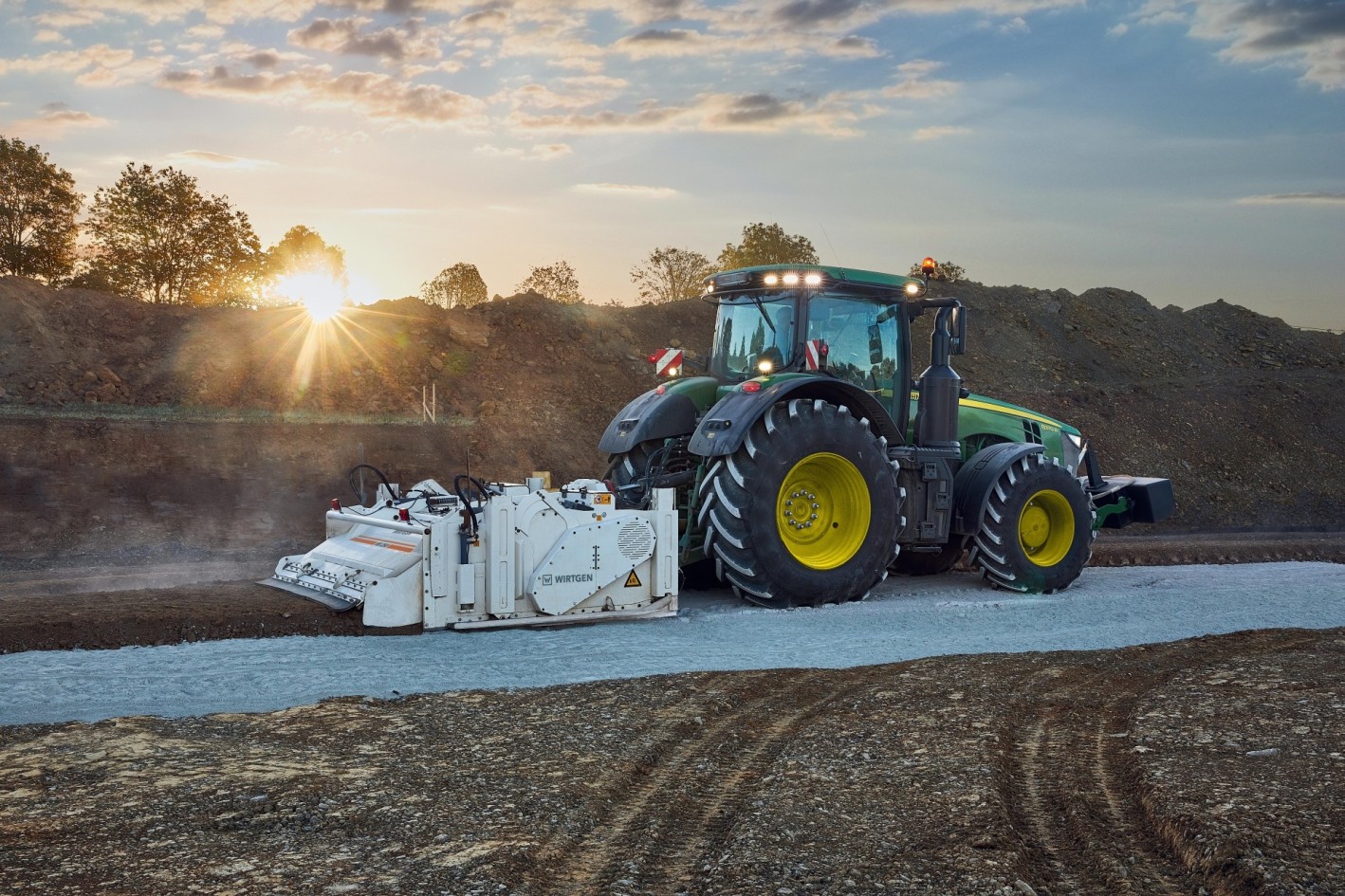The operating principle of soil stabilisation


Whether heavy, coarse-grained or sandy subgrade material: the tractor-towed stabiliser can be relied on to convert it into soil that is highly suitable for placing and compacting. If too coarse, the material to be stabilised is crushed in the mixing chamber by the milling and mixing rotor. Soft soil is covered with lime spread by, for instance, a binder spreader prior to treatment. Subsequent homogeneous mixing by the milling and mixing rotor causes the lime to remove the excess humidity from the soil. In earthmoving operations, soil improvement pays off in the construction of, for instance, dams or embankments, backfilling or site haulage roads. Soil improvement has shown itself to be eminently suitable also for landfills with clayey subsoils. Soil processed with suitable binding agents is practically unsusceptible to water and offers optimum conditions for further compaction.
Soil stabilisation with added binding agents like cement is a patent remedy for increasing the long-term resistance against stresses resulting from traffic and weather conditions. The cement is pre-spread by, for instance, a binder spreader and is then thoroughly mixed with the soil by the milling and mixing rotor. Soil stabilisation produces a ground of permanently high bearing capacity, strength and excellent resistance to frost. Soil stabilisation guarantees a permanently high degree of volume stability. Analyses and samples taken on site confirm that the specified targets have been met. The stabilised surfaces are ideally suited for the construction of parking lots, roads, sports grounds, track beds, harbour docks, airfields and industrial facilities.
